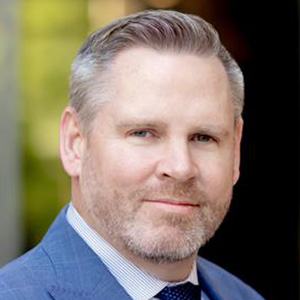Economy dodges recession, but warning signs remain
Manulife Investment Management co-strategists Macan Nia and Kevin Headland explain why inflation and jobs data point to further weakening ahead.

This article was featured in Wealth Professional.
When central banks rapidly hiked interest rates to subdue inflation, many predicted tough times ahead. While the developed world economies did buckle, they didn’t break, and the widely expected recessions failed to materialize.
For now, that is. Because we’re not out of the woods yet. Despite a rebounding services sector and robust unemployment numbers, a clutch of other data points suggests the economy could get worse before it begins to get better.
Nia and Headland are Co-Chief Investment Strategists for Capital Markets Strategy at Manulife Investment Management. With almost four decades of markets experience between them, they help advisors identify challenges and opportunities across a broad swathe of investment strategies, asset classes, and geographies around the world.
In their recent Market Intelligence report for the second half of 2023, Nia and Headland warn that sticky inflation and initial jobless claims point to an uncertain outlook for the economy and markets in the months to come.
“We believe that the recession has been postponed, not canceled,” they say in the report. “Given the economic data that we look at, the economy is likely to weaken before it gets better.”
More trouble ahead?
Nia and Headland agree that developed economies have proved to be more resilient than many expected through the beginning of 2023. They attribute this to a combination of pent-up savings, stimulus cheques, and a hesitancy by employers to cut staff, among other factors.
However, they argue that the better-than-expected unemployment rate is a lagging indicator that reveals more about the past than what lies ahead. For a more forward-looking indication they cite initial jobless claims.
“Over the past few weeks, we’ve seen a clear increase in both weekly claims for unemployment insurance and the four-week moving average,” they say, adding that these could be the “first cracks in the labour market” that suggest tougher times ahead.
Another concern is inflation. Although the pace of inflation slowed in the months leading up to January 2023, this was largely due to sharp pullbacks in select commodities such as crude oil and wheat. For example, after soaring nearly 60% on year in 2022, crude oil and wheat prices are now about 20% and 45% lower¹, respectively.
However, core inflation remains high today, partly due to a resilient economy and tight labour market. And recent data saw core inflation move higher in the United States and the United Kingdom, while hitting a record high in the Eurozone.
“The price momentum in core goods inflation appears to be inflecting higher again as favorable base effects are largely behind us,” they say.
Interest rates
With stubbornly high inflation continuing to worry the central banks, many have decided to continue tightening. The Bank of Canada, for example, reversed their policy pause and hiked rates yet again.
Nia and Headland believe the market moved too early to price in a dovish pivot by the central banks, and the markets need to reassess their approach to asset prices.
“There’s a risk that even if the Fed pauses in the coming months, the next move could be more tightening, not easing,” they add.
Where to invest?
In light of the worrying jobs data, troubling inflation, and the pivot back to raising rates; Nia and Headland suggest that investors pursue a balanced yet flexible approach toward equities and fixed income.
This includes higher quality equities that can withstand short-term volatility, and higher quality credit and longer-duration government bonds for fixed income.
“When looking at the opportunities in equities, while we’re constructive long term, we see there’s much uncertainty near term,” they say. “We believe a neutral posture in equities makes sense. U.S. equities have rallied strongly to start the year, but it has been predominantly on the back of the euphoria surrounding artificial intelligence.
“New bull markets are rarely built on rallies with this little breadth. The top 10 companies by market capitalization are responsible for 82% of the S&P 500 Index’s 14.8% return this year². These companies also happen to be benefitting from investors’ interest in AI.”
When it comes to specific geographies and industries, Nia and Headland don’t see any clear standouts in terms of opportunities or valuations.
“In environments such as these, we believe it’s often best to look at individual security selection rather than specific geographies or sectors. Further, a well-diversified portfolio could help smooth out the ride should we experience choppy waters over the near term.”
Fixed income
Assessing the bond market, the Manulife Investment Management strategists believe opportunities will unfold in three phases, which they call: clipping the coupon, duration is your friend, and take on risk.
The first phase, they believe started with last year’s losses providing an opportunity going forward. With yields across most fixed-income instruments higher since the start of last year, investors have benefited from “clipping the coupon.”
However, although there’s no clear line between one phase and the next, weaker economic data suggest that the second phase involving duration is approaching.
“In this second phase, we want to begin embracing longer-duration and higher-quality fixed-income instruments, such as 10-year government bonds,” they say. “By increasing duration and quality while transitioning to longer-dated government bond yields, investors will potentially be mitigating risk while also potentially increasing their return opportunity.”
For the third phase, once spreads widen out there’ll be a time to reallocate to high yield. “This just isn’t it,” they say.
Looking ahead
While the first half of 2023 was better than expected for both the economy and markets, Nia and Headland remain cautious about the outlook for the rest of this year and next. “A lack of market volatility can give investors a false sense of security,” they say, adding that the future remains clouded with uncertainty around a slowing global economy, geopolitical risks, sticky inflation, and central banks pivoting back to higher interest rates.
“Despite these potential possibilities, the opportunity is ripe for the patient and flexible investor to take advantage,” they conclude. “We need to remain focused on the road ahead to make sure we arrive at our destination.”
Sponsored by Manulife Investment Management, as of September 2023. Diversification does not guarantee a profit nor protect against loss in any market.
Related Solutions
Important disclosure
Important disclosure
The views expressed are those of Manulife Investment Management and are subject to change as market and other conditions warrant. Information about a portfolio's holdings, asset allocation, or country diversification is historical and is no indication of future portfolio composition, which will vary. Please read the fund facts as well as the prospectus before investing. The indicated rates of return are the historical annual compounded total returns including changes in unit value and reinvestment of all distributions and does not take into account sales, redemption, distribution or optional charges or income taxes payable by any securityholder that would have reduced returns. Mutual funds are not guaranteed, their values change frequently and past performance may not be repeated. Past performance is not indicative of further returns. Certain research and information about specific holdings in the Fund, including any opinion, is based on various sources believed to be reliable. All overviews and commentary are for information purposes only and are not intended to provide specific financial, investment, tax, legal, accounting or other advice and should not be relied upon in that regard. This material was prepared solely for informational purposes, does not constitute an offer or an invitation by or on behalf of Manulife Investment Management to any person to buy or sell any security and is no indication of trading intent in any fund or account managed by Manulife Investment Management.
Manulife Funds are managed by Manulife Investment Management Limited (formerly named Manulife Asset Management Limited). Manulife Investment Management is a trade name of Manulife Investment Management Limited.
Commissions, trailing commissions, management fees and expenses all may be associated with mutual fund investments. Please read the fund facts as well as the prospectus before investing. Mutual funds are not guaranteed, their values change frequently, and past performance may not be repeated.
© 2023 Manulife Investment Management. All rights reserved. Manulife Investment Management, the Stylized M Design, and Manulife Investment Management & Stylized M Design are trademarks of The Manufacturers Life Insurance Company and are used by it, and by its affiliates under license.
3074317

